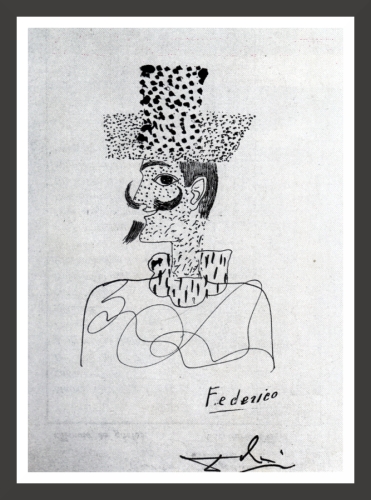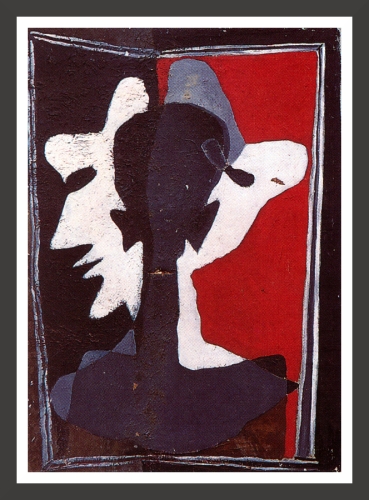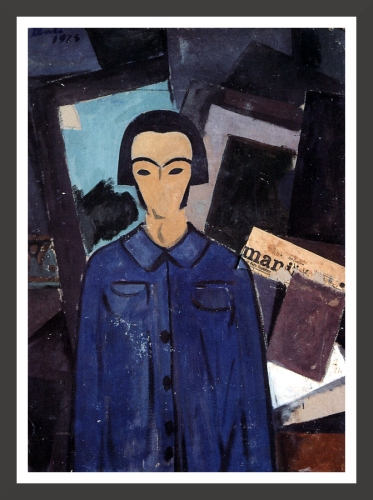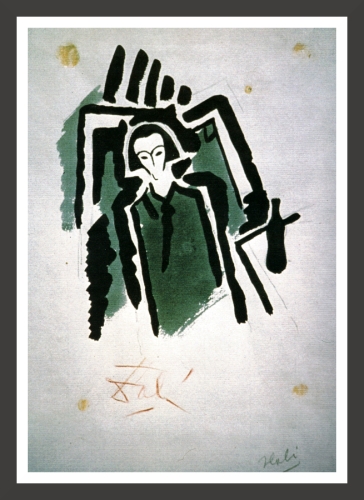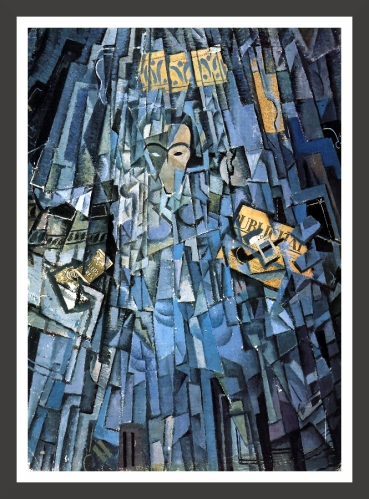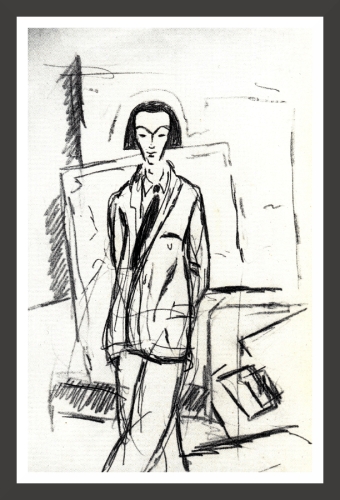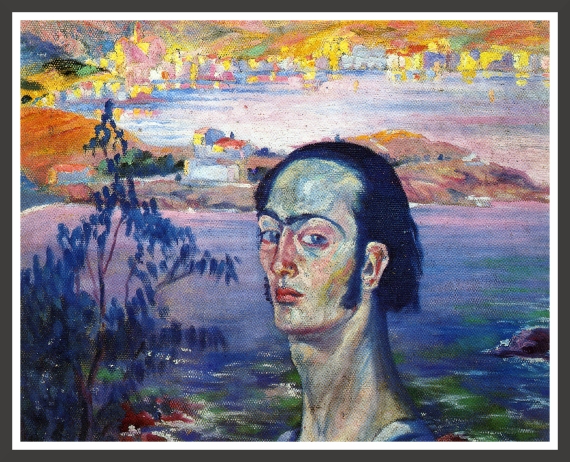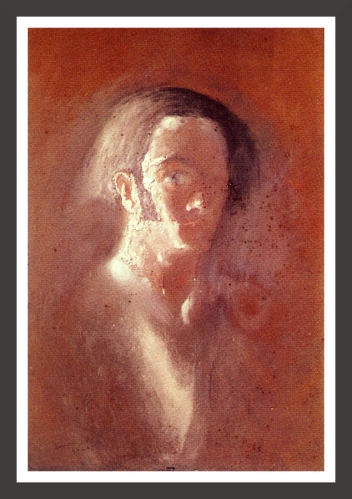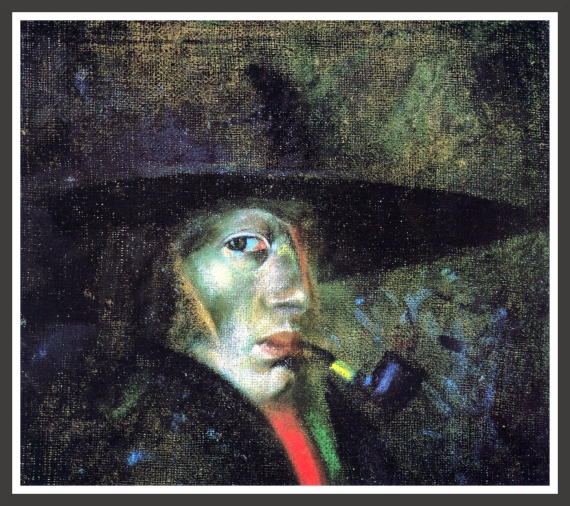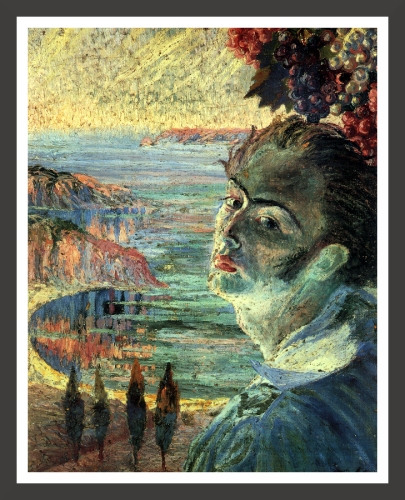Click on the image for a large view and details
Selfportrait dedicated to Federico Garcia Lorca (1928)
Autoportrait dédié à Federico Garcia Lorca
Analysis: This selfportrait in ink is dedicated to Federico Garcia Lorca, a Spanish poet and playwright Dalí met at the Madrid Academy of Fine Arts. Dalí and Lorca became very close. Lorca was known to be homosexual but the extent of Dalí’s relationship with him has never been entirely clear. There are some references in letters and writing to Lorca’s attempts to sodomize Dalí; one incident on a beach near Cadaqués is thought to have contributed to the decline of their relationship as Dalí had an acute fear of sexual contact and was repelled by Lorca’s advances.
The selfportrait, although just a sketch, shows a more confident Dalí than the one seen in his 1923 painting “Selfportrait with L’Humanité“. He has grown what would later be his trademark mustache, the ends emphatically turned up. The selfportrait also shows Dalí’s new style of dress, he is wearing a fancy hat and a cravat. When he became part of a group of literary and artistic avant-garde students, among whom Lorca was the leader, he began to dress as they did, as a dandy. It was a style that he was to keep, exaggerating it greatly in his later years.
